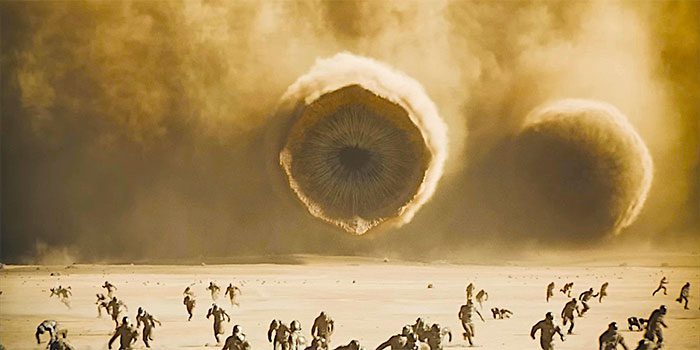The Sandworm, one of the iconic creatures of the Dune universe, has been critiqued by renowned physicist Neil DeGrasse Tyson.
Dune 2 is currently one of the most anticipated blockbusters, continuously making waves at box offices around the globe. Not only does it deliver a more intense and surprising storyline compared to the first installment, but the film also impresses with its grand, modern visual effects, offering an unparalleled visual feast.
The most evident example of this is the Sandworm—a fictional creature created by author Frank Herbert for the Dune world, which has been spectacularly depicted on the big screen. However, according to the famous scientist Neil deGrasse Tyson, the Sandworm has a fundamental flaw when examined through the lens of real-world biology.

Physicist Neil deGrasse Tyson has pointed out the flaws of the Sandworm in Dune – (Image: Internet).
Specifically, during his appearance on The Late Show With Stephen Colbert, Tyson remarked: “The Fremen, the indigenous people of the sands, one of their rituals is to ride on the backs of the worms, right? But that’s a worm moving in a straight line at high speed… Have you ever been chased by a snake moving in a straight line? No way! They have to coil up before they can launch forward.”
Of course, it is challenging to assess the characteristics of a fictional creature based on conventional biological principles. Furthermore, in the Dune universe, the Sandworm of Arrakis serves a role similar to that of dragons in European mythologies—mysterious creatures often associated with guarding treasure.
The detail of Paul Atreides successfully riding a Sandworm carries symbolic significance akin to Daenerys riding a dragon in Game of Thrones. This act allows Daenerys to exert influence over her people and authority over her enemies; the more skilled she becomes at riding dragons, the higher her status rises. Similarly, Paul rides the Sandworm Shai-Hulud to demonstrate his strength and move closer to being accepted by the Fremen as their prophesied savior.

The Sandworm carries symbolic significance similar to dragons in the Dune universe – (Image: Internet).
Additionally, when creating the Sandworm, Frank Herbert did not delve deeply into the details related to the movement process of the sandworm. Nevertheless, he provided a clearer explanation of how the sandworm functions, with a body divided into multiple segments, compared to high-capacity furnaces, and detailed how the sandworm’s lifecycle impacts the ecosystem on the planet Arrakis.
And certainly, after all, the sandworm is one of many methods that support Herbert’s storytelling, contributing to the creation of a vast, complex, and vibrant world in Dune.


















































